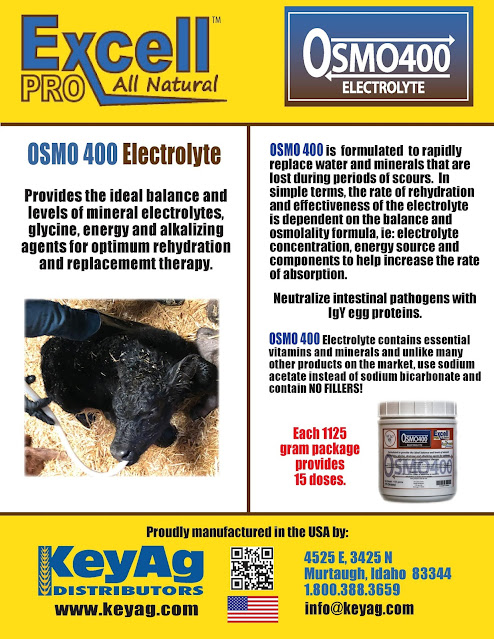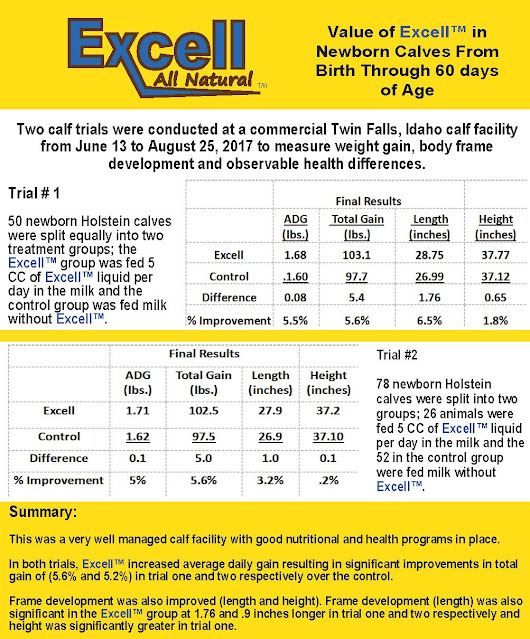The September federal order Class III milk price was announced at $18.39 per hundredweight, up $1.20 from August but $1.43 below September 2022 and the highest since April. The nine-month average stands at $17.13, down from $22.24 a year ago, and compares to $16.75 in 2021.
Late Friday morning Class III futures portend an October price at $16.84; November, $17.41; December, $17.59; January, $17.98; February, $18.10; and March at $18.18.
The September Class IV price is $19.09, up 18 cents from August, $5.54 below a year ago, but the highest Class IV since January. Its average stands at $18.65, down from $24.81 a year ago, and compares to $15.26 in 2021.
The August dairy products report showed U.S. cheese production totaled 1.155 billion pounds, down 0.1% from July and down 0.2% from August 2022. Output in the first eight months of the year totaled 9.39 billion pounds, up 0.2% from 2022.
Italian cheese totaled 483.9 million pounds, up 0.2% from July but 0.6% below a year ago. Mozzarella totaled 380.4 million pounds, down 0.9% from a year ago.
American output fell to 458.8 million pounds, down 2% from the July count which was revised down 6.9 million pounds, but was up 0.3% from a year ago. Year-to-date, American cheese stands at 3.8 billion pounds, up 1.9%.
Cheddar output fell to 314.4 million pounds, down 9 million, or 2.8%, from July’s total, which was revised 8.1 million pounds lower. It was down 3.7 million pounds, or 1.2%, from a year ago. YTD, cheddar was at 2.7 billion pounds, up 1.7% from 2022.
Butter output dropped to 140 million pounds, down 19.3 million pounds, or 12.1%, from July’s total which was revised up 2.3 million pounds. Output was down 3 million pounds, or 2.1%, from a year ago. YTD, butter production stood at 1.4 billion pounds, up 3.6% from a year ago.
Yogurt production totaled 413.2 million pounds, up 2.7% from a year ago, with YTD at 3.2 billion pounds, up 3.5%. Hard ice cream output, at 66.2 million pounds, was up 1.1% from 2022.
Dry whey production totaled 83.4 million pounds, down 4.5 million pounds, or 5.1%, from July, but up 8.1 million pounds, or 10.7%, from year ago. YTD, whey stands at 638.2 million pounds, up 3.4%. Stocks crept to 88.7 million pounds, up 1.3 million, or 1.5%, from July and up 21.6 million, or 32.1%, from 2022.
Nonfat dry milk output dropped to 113.4 million pounds, down 21.7 million, or 16.1%, from July and down 20.2 million, or 15.2%, from a year ago. Stocks fell to 266.6 million pounds, down 19.1 million pounds, or 6.7%, from July, and down 46.2 million pounds, or 14.8%, from a year ago.
Skim milk powder production slipped to 57.2 million pounds, down 3.5 million pounds, or 5.7%, from July and 8.4 million, or 12.7%, below a year ago.
StoneX said the cheese, butter and powder numbers were lower than expected: “Either these numbers are low or milk production data for August is overstated.”
Butter set a new record high to start October, and cheese was mixed. The CME cheddar blocks fell to $1.68 per pound Wednesday, lowest since July 19, but closed Friday at $1.7025, 1.75 cents lower on the week, fifth week of loss and 32 cents below a year ago. The barrels finished at $1.5775, up 9.75 cents on the week, 64.75 cents below a year ago and 12.50 cents below the blocks. There were 24 sales of block and 20 of barrel.
Midwestern cheesemakers continue to report limited milk offers, according to Dairy Market News. Loads did change hands at lower prices than in previous weeks but at mid-week were at least slightly higher than Class III.
Retail and food service cheese demand in the West is steady; however, sources indicate September was lighter for restaurant traffic compared to prior months, making that destination for cheese lighter. Export demand is moderate to light. Cheese production is steady, and Class III milk demand is strong, DMN said.
CME butter set new records daily, mainly on unfilled bids, peaking at the all-time high of $3.5025 per pound, up 20.25 cents on the week, up 84.25 cents in the last five weeks and 28.50 cents above a year ago, with only one sale all week.
Speaking in the Oct. 9 “Dairy Radio Now” broadcast, HighGround Dairy economist Betty Berning cited data from the dairy products report and cold storage report to justify what has happened to the butter price and blamed a slippage in cheese demand for the fall in cheese prices, adding that they “may have overcorrected.” She also pointed to the comparison between Class III and Class IV prices, noting that this week saw the butter price at twice the price of cheese: “Something we may not have ever seen before.”
Butter makers told DMN that demand remained intact despite the prices and that churning rates were not moving higher. “Bulls are clearly overwhelming any bears,” DMN said, but contacts expect downward correction near-term although “markets have yet to get that memo.”
Spot cream was slightly more available this week in northern parts of the West but, overall, is tight. Most of it is committed to contract obligations. Retail and food service demand is strong to steady. Exports are moderate to light, according to DMN, but then, it is the most expensive butter in the world.
Grade A nonfat dry milk saw its Friday finish at $1.18 per pound, down a half-cent on the week and 36 cents below a year ago, with 10 loads trading hands.
Dry whey oscillated some but closed the week 0.75 cents higher, at 29.75 cents per pound, 12.50 cents below a year ago, on 55 CME sales for the week.
Speaking of the powder, StoneX reports that the U.S.-Mexican border headed into week three of “more stringent efforts by the Texas governor to slow down immigration, which has slowed down inspections of trucks, causing congestion of trade flow at El Paso. This is starting to affect Mexican nonfat buyers who are beginning to get more concerned above the availability of product.”
We see how big an issue this is in August data. Milk powder exports totaled 150.6 million pounds, up 4.2% from August 2022, and topped a year ago for the third consecutive month, mainly due to Mexico, which set an August record, according to HighGround Dairy. YTD, Mexico holds slightly more than a 50% market share against weaker demand from Southeast Asia and China.
Cheese exports, unfortunately, only totaled 82.1 million pounds, down 2.9% and the fifth consecutive month to be below a year ago. Shipments to South Korea were down 50%, according to HGD, with notable losses to Saudi Arabia, Indonesia and Chile. Gains into other regions helped offset some of that, with sales to Mexico up 14%, Japan up 37% and Australia up 86%.
Butter exports were down 62.7% and have been down every month of 2023, except January, HGD said, who blamed high prices, which will price the U.S. out of the export market for the foreseeable future. Shipments to Canada, the No. 1 U.S. export market for butter, was up 32.7%.
Dry whey exports were down 38.3%, down for the fifth month in a row. HGD said volumes to China improved slightly, to five-month highs, but remain well below last year, down 45%.
The bulls got a little more fodder in Tuesday’s Global Dairy Trade auction where the weighted average headed higher for the third session in a row, up 4.4%, following the 4.6% rise Sept. 19 and 2.7% Sept. 5. Traders brought 84.5 million pounds of product to the market, up from 82.4 million Sept. 19. The average metric ton price climbed to $3,104, up from $2,957 Sept. 19 and highest since July 18.
Skim milk powder again led the gains, up 6.6%, following a 5.4% rise Sept. 19. Whole milk powder was up 4.8%, following a 4.6% gain. Anhydrous milkfat was up 3.7% after gaining 5.3%. Butter was up 1.3%, which followed a 3.8% gain Sept. 19. Buttermilk powder was up 0.6%. GDT cheddar was down again, falling 4.8%, after slipping 1.7% Sept. 19, and lactose was off 1.3%. It did not trade last time.
StoneX said the GDT 80% butterfat butter price equates to $2.1267 per pound U.S., up 3.7 cents from Sept. 19, and compares to CME butter which closed Friday at a world high $3.5025. GDT cheddar, at $1.7479, was down 8.6 cents, and compares to Friday’s CME block cheddar at $1.7025. GDT skim milk powder averaged $1.1604 per pound, up from $1.0887, and whole milk powder averaged $1.3296 per pound, up from $1.2694. CME Grade A nonfat dry milk closed Friday at $1.18 per pound.
Volume purchased by North Asia, which includes China, fell from the previous event but was up from last year, according to analyst Dustin Winston. “The aggressive buyers at this event were Southeast Asia and the Middle East, who both bought significantly more than the previous event, although SEA purchases were down slightly from last year,” Winston said.
Back on the farm, significant drops in feed plus a hefty increase in the All Milk price moved the milk feed ratio higher. The U.S. Department of Agriculture’s ag prices report shows the August ratio at 1.67, up from 1.38 in July, and compares to 1.69 in August 2022.
The All Milk-price average saw its first advance in 10 months, jumping to $19.70 per cwt, up $2.30 from July but $4.40 below August 2022.
The national corn price averaged $5.73 per bushel, down 49 cents from July, after falling 27 cents the previous month, and was $1.51 below August 2022 prices.
Soybeans averaged $14.10 per bushel, down 60 cents, after rising 20 cents the previous month, and is $1.20 per bushel below a year ago. Alfalfa hay dropped to $230 per ton, down $14 per ton from July and $46 per ton below a year ago.
The August cull price for beef and dairy combined climbed to an average $115 per cwt, up $4 from July, $24.90 above August 2022 and $43.40 above the 2011 base average.
Income over feed costs in August were below the $8 per cwt level needed for steady to higher milk production for the seventh month in a row, according to dairy economist Bill Brooks, of Stoneheart Consulting in Dearborn, Missouri. Input prices were lower, he said, but all three commodities were in the top five for August all time. Feed costs were the fifth highest ever for the month and the 37th highest of all time. The ratio was below the five-year average for the 15th month running, as the average ratio for August is 2.00, Brooks said.
“For 2023, milk income over feed costs (using Sept. 29 CME settling futures prices for Class III milk, corn and soybeans plus the Stoneheart forecast for alfalfa hay) are expected to be $7.86 per cwt, a loss of 40 cents per cwt versus last month’s estimate. 2023 income over feed would be below the level needed to maintain or grow milk production and down $4.05 from 2022’s level,” Brooks said.
Meanwhile, dairy margins continued to decline the second half of September despite lower projected feed costs although price movement between Class III and Class IV milk has deviated drastically, according to the latest Margin Watch from Chicago-based Commodity and Ingredient Hedging LLC.
“Plentiful cheese stocks amidst weak demand led to a selloff in both spot block and barrel cheddar prices at the CME, which in turn has pressured the Class III market,” MW said. “On the other, a large decline in butter inventories as milk production plummets in the West has caused spot butter to rally sharply.”
MW reported highlights from the August Milk Production report, adding that dairy cow numbers “may be further revised down as cow slaughter was elevated throughout the month in response to negative margins and soaring beef prices.”
The Oct. 3 “Daily Dairy Report” said, “Dairy producers and processors who dumped milk without compensation due to certain weather disasters over the past three years could be eligible for reimbursement through the new Milk Loss Program run by USDA’s Farm Service Agency.”
“Last month, USDA announced that it would compensate dairy producers for up to 30 days of lost milk that could not be marketed due to ‘droughts, wildfires, hurricanes, floods, derechos, excessive heat, winter storms, freeze, and smoke exposure that occurred in the 2020, 2021 and 2022 calendar years,’” DDR said. “Signup is underway and lasts through Oct. 16.”
The week ending Sept. 23 saw 58,800 dairy cows go to slaughter, up 1,900 from the previous week but 2,500 or 4.1% below a year ago. YTD, 2,321,500 head have been culled, up 101,400 or 4.6% from a year ago.
“Who feels the need to continue the rapid pace of dairy cow slaughter when feed costs are as low as they are?” StoneX said. “Total beef slaughter has experienced the same sentiment with nearly 50,000 less head of cattle slaughtered on a total beef basis from last year’s levels during the 38th week.”
USDA’s crop progress report showed 82% of U.S. corn rated mature, as of the week ending Oct. 1, up from 70% the previous week and 9% ahead of a year ago. 23% has been harvested, up from 19% a year ago, and 53% was rated good to excellent, unchanged from the previous week and 1% above a year ago.
The report shows 86% of the soybeans dropping leaves, up from 73% the previous week and 8% ahead of a year ago. 23% has been harvested, up from 20% a year ago, and 52% was rated good to excellent, up 2% from the previous week but 3% below a year ago.
Cooperatives Working Together member cooperatives accepted nine offers of export assistance this week that helped capture sales contracts for 1 million pounds of American type cheese and 44,000 pounds of whole milk powder. The product is going to customers in Asia, Middle East-North Africa and South America through December.
















.jpg)











